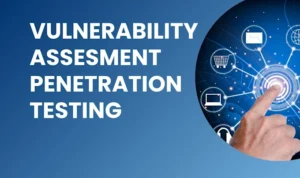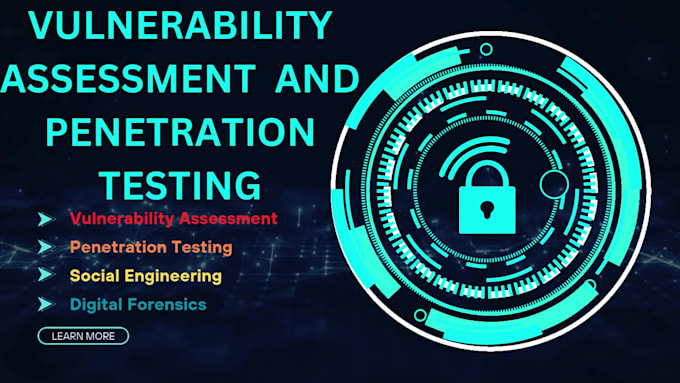In today’s cyber‑threat landscape, understanding the difference between a penetration test vs vulnerability scan is vital. Though these terms are often used interchangeably, they serve different purposes. A proper comparison helps readers evaluate which approach aligns best with their security needs. This article explores both methods in detail, guiding you toward informed decisions.
1. What Is a Vulnerability Scan?
A vulnerability scan is an automated process that probes systems, networks, or applications for known weaknesses. It leverages scanners to detect:
-
Misconfigured servers
-
Missing security patches
-
Open ports and known exploitable software
Key traits:
-
Automated & frequent: Often run daily or weekly
-
Breadth over depth: Quickly identifies known issues
-
Cost-effective: Subscriptions are affordable
According to industry research, continuous vulnerability scanning is a fundamental control for cyber defense. However, it only surfaces known issues and may produce false positives, especially in unauthenticated scans.
2. What Is a Penetration Test?
In contrast, a penetration test (or pentest) is a simulated, targeted cyber‑attack conducted by security professionals to identify real exploitable vulnerabilities.
Highlights include:
-
Manual and automated: Testers exploit vulnerabilities to demonstrate actual risk
-
Scoped and timed: Usually done yearly or after major changes
-
High cost: Professional services generally range in the thousands
Pentests involve stages like reconnaissance, scanning, exploitation, privilege escalation, and cleanup. They dig deeper than scanners and can uncover unknown attack vectors.
3. Penetration Test vs Vulnerability Scan: Feature Comparison
| Feature | Vulnerability Scan | Penetration Test |
|---|---|---|
| Purpose | Identify known, common vulnerabilities | Simulate a real cyber‑attack to assess exploitability |
| Execution | Automated with minimal human input | Combines automation and expert manual techniques |
| Coverage | Broad and recurring | Deep and limited to agreed scope |
| Output | Long lists of potential issues | Focused report with real-world exploit results |
| False positives | Possible due to unauthenticated or settings level scans | Low—manually validated issues |
| Cost | Low to moderate annual subscription fees | Higher due to manual testing and expert labor |
| Best for | Ongoing baseline security | High-risk systems, compliance, or sensitive data environments |
This table highlights why neither method fully replaces the other—they’re complementary security tools.
4. Detailed Insights: Vulnerability Scan
-
How it works: Uses automated tools with or without credentials.
-
Pros:
-
High frequency detects new issues quickly.
-
Affordable and scalable.
-
-
Cons:
-
Does not prove exploitability.
-
May trigger false alarms.
-
Organizations use scans to maintain baseline security hygiene. Overlooking them may leave critical misconfigurations unaddressed.
Physical Penetration Testing: Can Hackers Bypass Your Office Security?
5. Detailed Insights: Penetration Testing
-
Execution: Begins with reconnaissance and ends with post-exploitation, simulating advanced threats.
-
Pros:
-
Validates risk with real exploit attempts.
-
Provides actionable, prioritized reports.
-
-
Cons:
-
More expensive.
-
Less frequent—only periodic checks.
-
Pentests mimic attacker behaviors, revealing the actual level of system risk and readiness.

Penetration Test vs Vulnerability Scan
6. When to Use Each: Penetration Test vs Vulnerability Scan
Use Vulnerability Scans When:
-
You need continuous monitoring
-
Budget constraints prevent full pentests
-
You manage routine patching and compliance
Use Penetration Tests When:
-
Handling sensitive or regulated data
-
Preparing for audits (GDPR, HIPAA, PCI‑DSS)
-
Launching major applications or infrastructure changes
Certified pentesters, often holding CEH or similar certifications, bring deep expertise—essential when stakes are high.
7. Why Both Are Essential
A secure cybersecurity program includes both:
-
Vulnerability scans as detective controls
-
Pentests as proactive offensive validation
This layered strategy aligns with CIS Critical Security Controls and NIST standards. Scanning identifies issues; pentesting tests exploits against those issues.
8. How “Hire a Hacker Expert” Combines Both
On Hire a Hacker Expert, you’ll find:
-
Detailed Vulnerability Assessment services
-
Professional Penetration Testing solutions outlined in our Ethical Hacking guides.
We blend automated scanning with expert-driven testing. This dual approach ensures comprehensive security coverage.
9. External Resources to Learn More
-
OWASP Testing Guide – Best practices for web application pentests
-
NIST SP 800‑115 – A framework for effective penetration testing
-
CIS Controls – Advises continuous scanning as a key defense mechanism.
These authoritative resources provide standards and methodologies you can trust.
10. Smooth Implementation Steps
-
Define your needs → what systems, apps, or data do you want to evaluate?
-
Automate scanning → schedule weekly or monthly vulnerability scans.
-
Plan pentests → after major releases, quarterly, or annually.
-
Review results with security teams; assign remediation tasks.
-
Repeat → continuous refinement equates to stronger defenses.
This synergy addresses both known and unknown threats effectively.
Conclusion
The title question—Penetration Test vs Vulnerability Scan: What’s the Difference?—reveals they serve different yet complementary purposes. Vulnerability scans provide ongoing broad coverage, while pentests validate real-world risk and uncover deeper threats. Implementing both helps you build a layered, resilient cybersecurity posture.



No responses yet